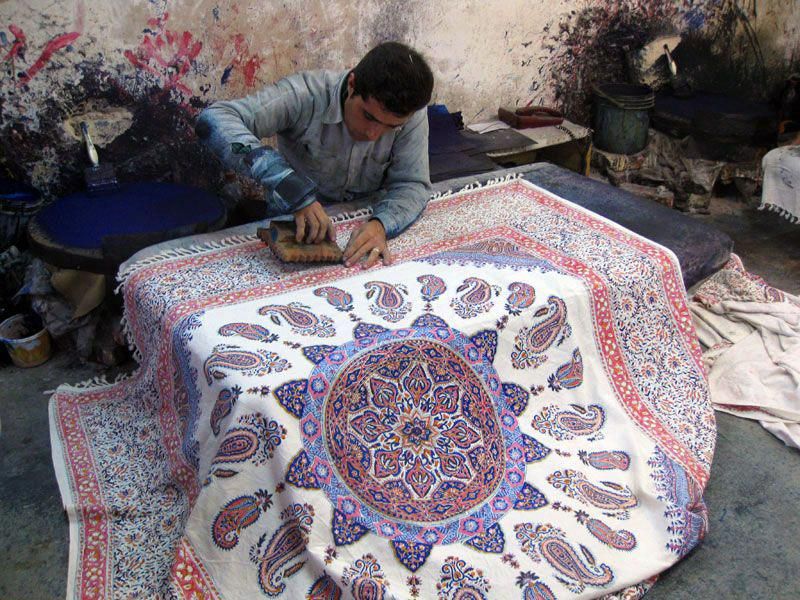
Calico or Ghalamkar was used for clothes
Calico or Ghalamkar is a unique type of patterned Iranian Fabric. The fabric is printed using patterned wooden stamps. The stamps are mostly made of pear wood which has better flexibility and density for carving and long-standing utility.
It is one of the oldest crafts of ancient Persian which was in the peak of fame for centuries. This sort of cloth is prepared of pure cotton. The history of Calico fabrics date back to the Sassanid period, the fourth Iranian dynasty and the second Persian Empire (224 – 651 CE).
The fabrics were all hand painted with brush and pen. They reached their height of popularity specially during the Safavid dynasty.
The cotton is being printed using patterned wooded stamps. Each shape is stamped several times with different colored stamps, and the final shape is formed by precisely overlaying colored stamps on top of each other. There are four major colors in the production of Ghalamkar. Four of them are natural (mineral) colors.
After finishing printing, they are, in the first stage, steamed for at least an hour to stabilize their designs. Then, taken to the riverbed and kept in some basins to be soaked well, in a great amount of running water. Afterwards, the pieces are piled in some large copper vessels containing stabilizers (liquid) and are boiled. At the same time, they are turned upside-down by some wooden sticks and washed again in the Zayandeh Rood, then spread on the banks to dry in the final stage.